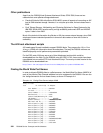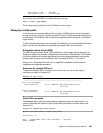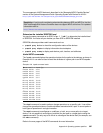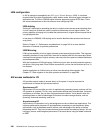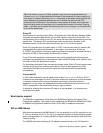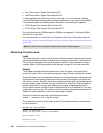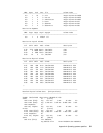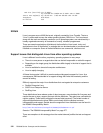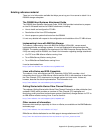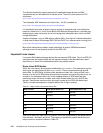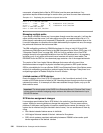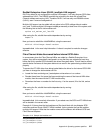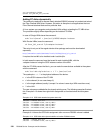
312 DS6000 Series: Concepts and Architecture
seek dist (%tot blks):init 27.84031,
avg 13.97180 min 0.00004 max 57.54421 sdev 11.78066
time to next req(msec): avg 89.470 min 0.003 max 949.025 sdev 174.947
throughput: 81.8 KB/sec
utilization: 0.87
...
Linux
Linux is an open source UNIX-like kernel, originally created by Linus Torvalds. The term
“Linux” is often used to mean the whole operating system, GNU/Linux. The Linux kernel,
along with the tools and software needed to run an operating system, are maintained by a
loosely organized community of thousands of, mostly, volunteer programmers.
There are several organizations (distributors) that bundle the Linux kernel, tools, and
applications to form a “distribution,” a package that can be downloaded or purchased and
installed on a computer. Some of these distributions are commercial, others are not.
Support issues that distinguish Linux from other operating systems
Linux is different from the other, proprietary, operating systems in many ways:
There is no one person or organization that can be held responsible or called for support.
Depending on the target group, the distributions differ largely in the kind of support that is
available.
Linux is available for almost all computer architectures.
Linux is rapidly changing.
All these factors make it difficult to promise and provide generic support for Linux. As a
consequence, IBM has decided on a support strategy that limits the uncertainty and the
amount of testing.
IBM only supports the major Linux distributions that are targeted at enterprise customers:
RedHat Enterprise Linux
SUSE Linux Enterprise Server
RedFlag Linux
These distributions have release cycles of about one year, are maintained for five years and
require the user to sign a support contract with the distributor. They also have a schedule for
regular updates. These factors mitigate the issues listed previously. The limited number of
supported distributions also allows IBM to work closely with the vendors to ensure
interoperability and support. Details about the supported Linux distributions can be found in
the DS6000 Interoperability Matrix:
http://www.ibm.com/servers/storage/disk/ds6000/pdf/ds6000-matrix.pdf
See also “The DS6000 Interoperability Matrix” on page 277.
There are exceptions to this strategy when the market demand justifies the test and support
effort.



